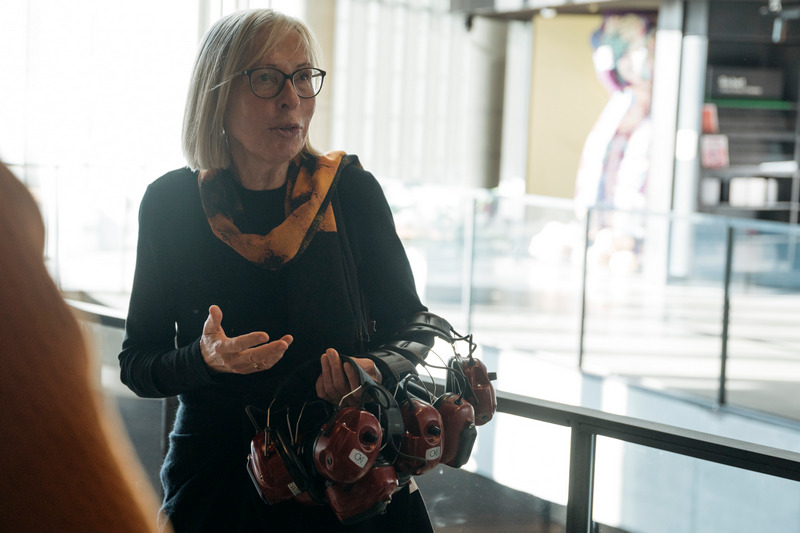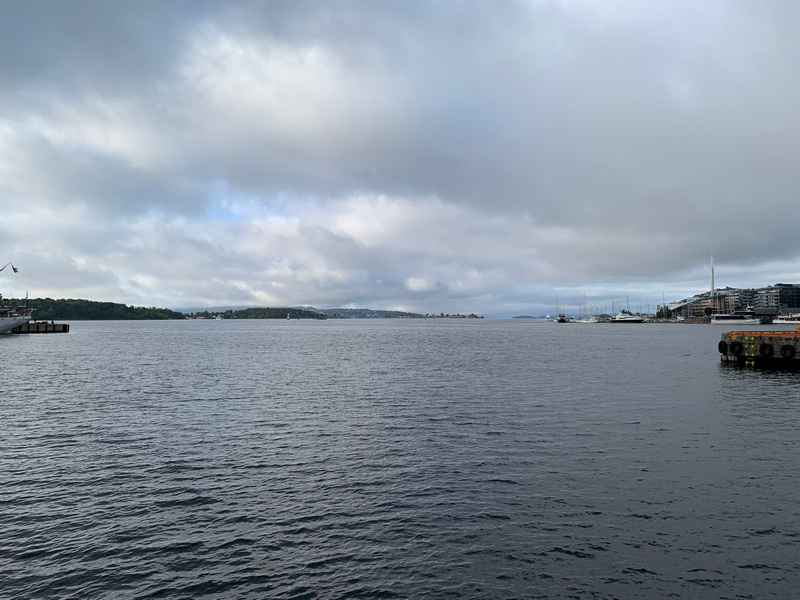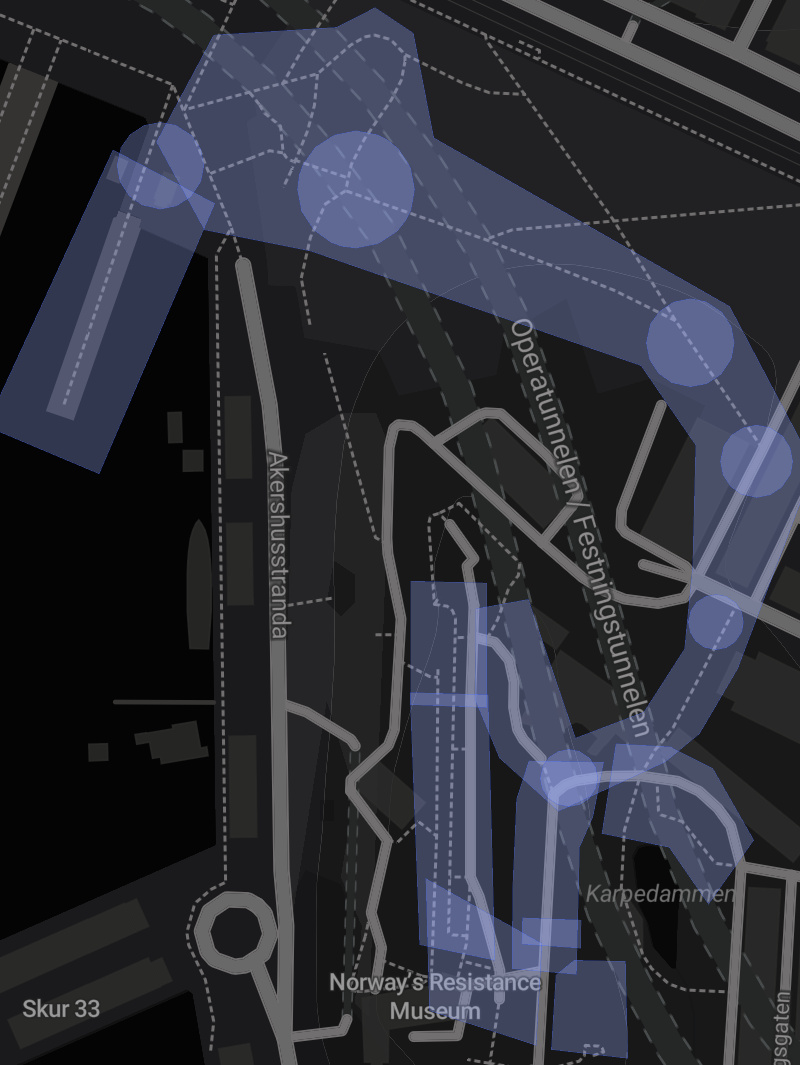
Two of my favourite elements of the Ultima festival are its sound walks and installations. To explore Trevor Mathison‘s From Signal to Decay Vol. 6 i walked across town to Atelier Nord, one of Oslo’s most chameleonic spaces. On this occasion its usually bright, open interior had been partitioned, with one half enclosed in darkness. But the first thing that struck me was the intensity of the sound; previous experiences in Atelier Nord have demonstrated different forms of elusiveness, but Mathison’s soundworld struck me full force across the chest. Reinforcing this was the sight of two large loudspeakers swinging back and forth in the centre of the space, as if propelled by the sheer force of the sound.

It wasn’t immediately apparent from this frame of reference, but moving across and into the darkened half of Atelier Nord revealed that we were caught in a six-minute loop. On the screen were views looking out towards mountains and the sea, initially through rain-strewn glass, later seen clearly. While our vision was obscured Mathison’s soundscape pummelled the ears, assertive electronic tones muscling their way into the foreground, in the midst of considerable waves of turbulence. This was followed by a literal sea change, the unimpeded view across the water triggering a profound calming, and with it a shift to dronal ambience, though traces of the turbulence remained at the periphery. Combined with the shifting soundscape going on outside this haven, which incorporated elements unique to Atelier Nord’s place and structure, it all made for a compelling meditation on sound and location.
An even more direct example of this came in the sound walk devised and led by Christina Kubisch. A regular at Ultima, in 2019 Kubisch devised a walk around the city centre which, wearing her custom headphones that reveal electromagnetic waves, transformed its streets, shops and public transport into a dazzling invisible noise network. On this occasion the walk was within Deichman Bibliotek, Oslo’s sumptuous new library building which opened in 2020. Being a modern structure, it was stuffed full of technology on every floor, from the obvious (lighting, computers, elevators) to the unexpected (hearing loops, sewing machines, 3D printers, electronic shelving), flooding our ears with a rich, constantly-changing chorus of pitch, noise and rhythm.

An outdoor sound walk was provided this year by Gyrid Nordal Kaldestad, titled Travelling and Remaining. In contrast to the intensity of Kubisch’s walks, Kaldestad’s was a peaceful, contemplative journey, all the more so as i chose to follow this very early in the morning, while much of Oslo was still waking up. The walk began in the city’s mediaeval Akershus Fortress, being guided – in terms of both physical and mental direction – by Kaldestad’s delicate, almost discreet voice, beginning in a personal way, describing memories of the parts of Oslo visible from the fortress walls, before progressing into her main theme, the significance of travel. Sounds of water permeated the walk, referencing the nearby fjord that was increasingly visible as the journey progressed, first at a distance (from atop the fortress), later at its end, arriving at the end of the harbour. Along the way we were invited to contemplate what travel is, what it means, when it’s been impossible to travel, while assorted voices shared their own thoughts on important personal spaces and places. The locations chosen by Kaldestad for the walk could hardly have been better and more telling: beginning in a fortress, a space designed to restrict movement, keeping people in or out, and ending at the water’s edge, with boats everywhere offering easy travel in a plethora of directions.

My headphones meant that it was impossible for me to hear the outside world, yet Kaldestad’s sound design was such that the headphones felt transparent, as if the real world and the sound walk had fused into a single enhanced reality. As a foreigner in Norway, it felt good to reflect on the blessing of having the opportunity to travel, to hear new sounds, visit (and revisit) new places, and take time in them, getting to know them and figuring out what makes them literally and figuratively tick. The best thing about sound walks such as this is that you emerge from them changed, sometimes profoundly. You’ve been present in the world yet, for a time, you’ve also been half absent from it, enclosed in the artificial construct of the walk; yet when you become fully present again, the world isn’t the same, it’s been expanded, clarified, elaborated and coloured by the journey.
This is why sound walks and installations are such a vital part of music festivals. Festival-going is inevitably a form of pilgrimage, travelling away, sometimes very far, from the familiarity of home. Works such as these by Mathison, Kubisch and Kaldestad are an invaluable opportunity, away from the more conventional concert hall environments, to consider that act of travel, and the relationship between time, place and sound, and reflect on its unique meaning and importance for each of us.


[…] experience of Christina Kubisch‘s electromagnetic walk around Oslo’s library had a counterpart in her new vocal work, Strømsanger (“electrical singers”), […]